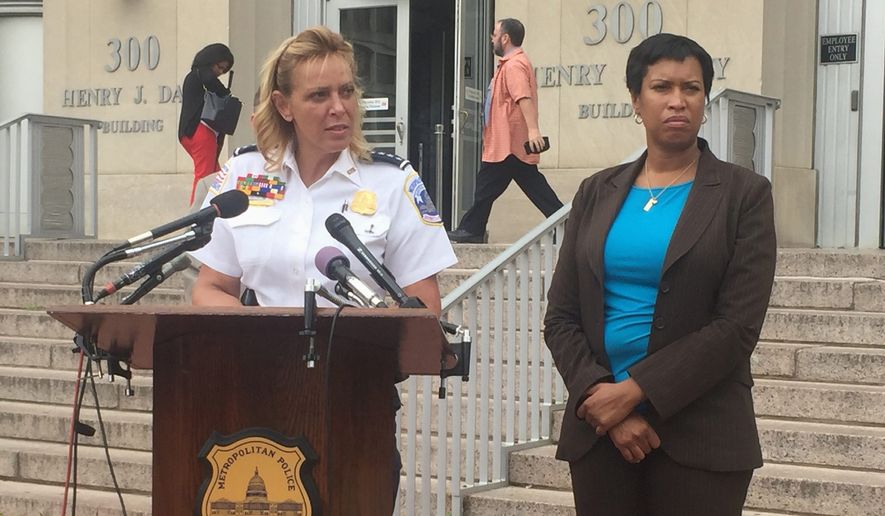The homicide rate in the District is falling after last year’s dramatic spike in killings, and D.C. police attribute the reduction to the swift action of a new unit charged with getting violent criminals off the streets quickly.
As of Tuesday, 74 homicides had occurred in the District compared to 87 at this time in 2015 — a 15 percent decline. Last year the District saw a 54 percent increase in slayings compared to 2014.
Metropolitan Police Chief Cathy Lanier said the decrease in homicides could partly be attributed to the newly created Criminal Apprehension Unit, which was convened about two months ago and is tasked with executing warrants on violent criminal quickly.
Many of last year’s killings resulted from disputes between rival groups, Chief Lanier said. Often those disputes prompt retaliation that runs up the homicide tally.
That’s where the Criminal Apprehension Unit comes in.
Instead of randomly serving open warrants across the city, the unit goes after violent offenders as soon as a detective obtains a warrant, Chief Lanier said. That’s important because in the days and weeks following a slaying, emotions often run high and the chance for retaliation is much greater.
SEE ALSO: Hundreds of visitors get a whiff of the corpse flower at the U.S. Botanical Garden
“Getting them off the street quickly is important. It’s been tremendously helpful,” the chief said. “We saw a rapid decline right off the bat.”
But Chief Lanier cautioned against premature celebration, saying that the homicide rate could spike again at any time. She called a year-to-date comparison “dangerous,” saying that a larger data set such as a five-year span would be more indicative of how crime is trending.
“I always caution year-to-date stats,” she said. “They don’t give you real understanding of where crime is.”
Nearly every ward in the city has reported fewer homicides this year — except Ward 7, where slayings have more than doubled over last year.
“There are issues in Ward 7 with rival groups,” Chief Lanier said. “The tally on that was high, but it’s very concentrated in a couple areas.”
The areas near 37th Street, Texas Avenue and Ridge Road in Southeast, as well as the Marshall Heights neighborhood, have been hit especially hard, the chief said.
SEE ALSO: D.C. gun advocates fight to legalize Tasers
A key issue for police is the rise in high-capacity magazines being used on firearms, allowing a shooter more chances to hit someone, including innocent bystanders. A normal magazine for a handgun holds about 10 rounds, but some after-market high-capacity magazines can hold up to 50.
Chief Lanier said D.C. police saw a “dramatic” increase in high-capacity magazines last year and that trend is continuing.
“That was biggest issue last year and we’re still seeing a lot of high-capacity magazines this year,” she said.
Like the District, a few other cities saw an increase in homicides last year.
For example, the number of homicides in Baltimore jumped from 211 in 2014 to 344 in 2015. Chicago saw killings increase from 427 in 2014 to 493 last year.
So far this year, Baltimore slayings have receded in a fashion similar to the District’s: The city had tallied 186 murders at this time last year, but has recorded only 171 this year, Baltimore Police statistics show.
Chicago hasn’t been so lucky. Homicides are up when compared year-to-date. During the first seven months of 2015, the city racked up 267 killings compared to 384 over the same period this year, according to Chicago Police Department statistics.
“Whether homicides are up or down can change almost daily,” Chief Lanier said. “There’s the same potential for spikes this year, but so far we’ve been able to pick them off quickly.”
• Ryan M. McDermott can be reached at rmcdermott@washingtontimes.com.




Please read our comment policy before commenting.